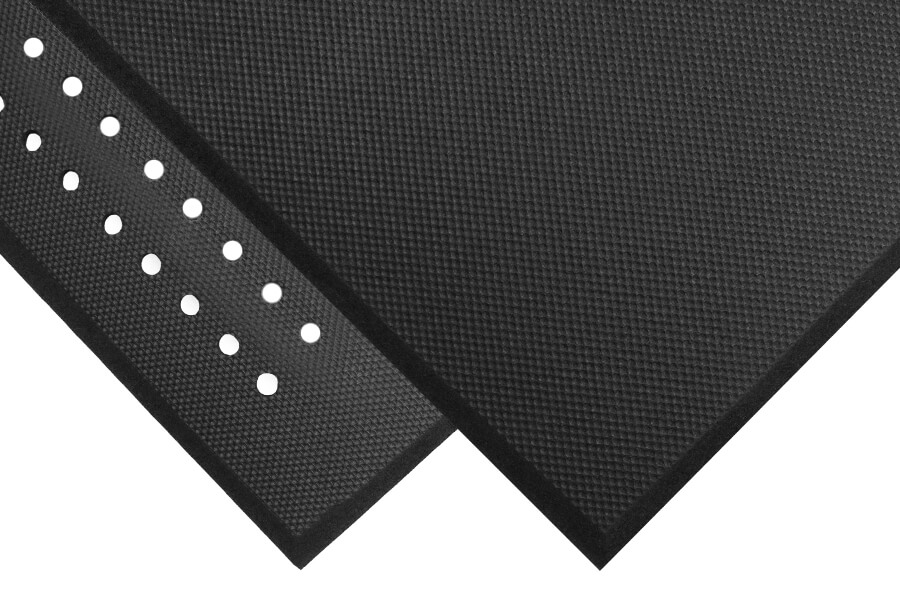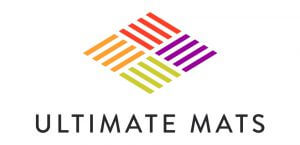
History of Rubber Floor Mats
The History of Rubber Floor Mats
Floor mats. Who thought of those? And where did they come from? Many people don’t think about the humble floor mats, which we routinely walk on today. In reality, the mats we use every day represent a huge progression in technology and ingenuity from humans stretching back thousands of years. Whereas mats started with braided plant fibers on likely earthen floors, today’s mats are highly engineered and constructed out of contoured hybrid materials like fabric and rubber.
Modern mats are exceptionally efficient at absorbing excess dirt and water form people walking into buildings as well as keeping workers safe from workplace hazards. So how did mat technology get this far?
A Brief History of Early Floor Mats:
Archaeologists believe that the earliest portable floor coverings were made as far back as 25,000 years ago in Paleolithic times. The dwellings of clans used tree bark to create a type of felt which was then made into floor mats. After all, even primitive people don’t like hunters tracking in dirt and mastodon guts all over the place. It shouldn’t be surprising that humans have always worked hard to improve their internal habitats.
Not long after, humans developed the practice of weaving to make certain goods. Women would take either straw or plantlike grasses called rushes and weave them together for clothing, baskets, or other items. The first recorded use of plaited rush floor mats was in Mesopotamia about 6,000 years ago. Archaeologists throughout the world have found mats near fire pits at hundreds of excavation sites.
In biblical times, people who weren’t rich lived in houses with floors made of earth. Instead of using mats to clean footwear like today, the mats were used as sleeping pads and too create a little bit of warmth from the cold. These mats were probably constructed of woolen yarn woven together. These types of floor coverings were popular well into the Middle Ages. Before all of our modern conveniences like tiles and wood flooring, humans across the world had many different solutions for staying warm and comfortable.
In Japan, noblemen adopted the tatami mats as far back as the ninth century. Tatami is made out of straw formed from both rice and soft rush, and these mats were reserved for the seating areas for aristocrats. It wasn’t until the 17th century that commoners were able to procure tatami mats for their homes.
In the early 1800s, a new type of floor covering was created using the waste products from traditional weaving looms. The discarded pieces of yarn, known as thrums, were collected and pulled through a woven base of straw or some other sturdy material. The practice, known as rug hooking (whose roots may extend further back into history), became popular in floor mats found in England.
As the 20th century dawned, the set of materials used to make floor mats expanded. In America, people used everything from straw and burlap to canvas and jute in floor mats. It wasn’t until the Industrial Revolution was in full swing that institutional floor coverings were made from rubber and petroleum-based materials.
Rubber Mats? When Things Got Exciting
So what makes modern floor mats so exciting? Well for one they are amazingly efficient. While your average building with as little as 150 people entering and exiting can have over a pound of dirt tracked in every week, a three stage mat system can actually reduce this by 85-95%. Who knew all the dust stuck to your shoes could add up that quickly? But how did rubber mats evolve to be so well-constructed and efficient?
The Magic of Rubber Matting
Vulcanization, invented in the 19 th Century, makes all the difference when it comes t building a comfortable and flexible mat. Modern floor mats are so efficient because this process of treating natural materials makes them more durable for heavy duty applications while keeping them flexible enough to maintain contours that don’t erode.
The usage of flexible plastics is not actually new. As far back as 1600 BCE, from the Olmecs (1500 BCE to 400 BCE) to the Aztecs (1100 ACE to 1522 ACE), rubber was cured in a process similar to vulcanization. While the chemistry involved probably wasn’t extremely well understood, when natural latex was mixed with juice of certain vines, a durable material similar to modern rubbers could be made.
The modern process of vulcanization was invented sometime in the 19 th century, though the exact inventor isn’t fully known. A man named Thomas Hancock had the first patent on the vulcanization of rubber, but it was actually Charles Goodyear, of tire company fame, that likely came up with the underlying mechanism behind its creation. Though the invention of vulcanization was immensely important, it was likely an accidental discovery.
Today’s modern floor mats aren’t made through this process. In fact, the processes that are used today are much faster, stronger, and more reliable than what was originally thought up by Charles Goodyear almost 200 years ago. The modern creation of good mats depends on accelerating agents which catalyze the bonding of sulfur to rubber. This allows for much shorter cure time and significantly less energy for production. Then first example of this is credited to Goerg Oenslager, who theorized and proved that thiocarbanilide can catalyze the bonding of sulfur with rubber. Currently, there are five common systems of curing rubber: sulfur systems, metallic oxides, metallic oxides, peroxides, urethane crosslinkers, and acetoxysilane.
The invention that was necessary for today’s exceptionally efficient rubber matting is the bonding of non-woven synthetic fabrics directly to rubber. The adhesion between fabrics, which absorb liquids and serve as an abrasive on the bottom of shoes, and rubber ridges, which then allow for fluid collection, was the last step in efficient entry mats. Somewhere during the 1940’s there was a confluence between rubber production and fabric adhesion. While the science behind this is quite advanced, it’s important to understand that as with every other form of manufacturing there are now multiple working processes including: hot calendaring, belt calendaring, through-air thermal bonding, ultrasonic bonding, and radiant-heat bonding. We’ve truly come a long way from tree bark and woven fibers.
Why Are Modern Methods So Efficient?
It all has to do with design, modern rubber technology, and the bonding of fabric to rubber. There are a few intricacies of the modern floor mat that make it efficient at keeping buildings clean and people safe (see diagram below). If you look at the top of most mats you would use in a building, there is a fabric top (A & C) which gives people a comfortable and familiar surface to walk on. This fabric also serves a dual purpose as a grip and a slight abrasive to brush off and start drawing in moisture. All the moisture and mud that gets brought in from shoes is kept out by the ridges in the mat (B). These ridges create troughs (E) where water and mud can pool safely. These troughs (E) throughout the mat serve to keep people from slipping. Coupled with grip on the bottoms (D), modern floor mats do an incredible job of keeping people safe and the inside of buildings clean.
Rubber Floor Mats Today
Today, floor mats are not only effective in keeping floors clean, but they are also eco-friendly. Many floor mats are manufactured using recycled materials from plastic beverage bottles and vehicle tires. Modern floor mats can even be visually appealing with colorfast yarns, which maintain their appearance for years. Colorful logos can also be displayed on floor mats thanks to state-of-the-art digital printers and adhesives.
Whether you need a floor mat that’s highly moisture-absorbent, one that aggressively scrapes soil from footwear, or even one that reduces fatigue levels for those who stand on it, Ultimate Mats is your one-stop shop for all of your floor mat needs. Contact Ultimate Mats today and check out their full line of superior floor mats, some of which may end up in future history books!
